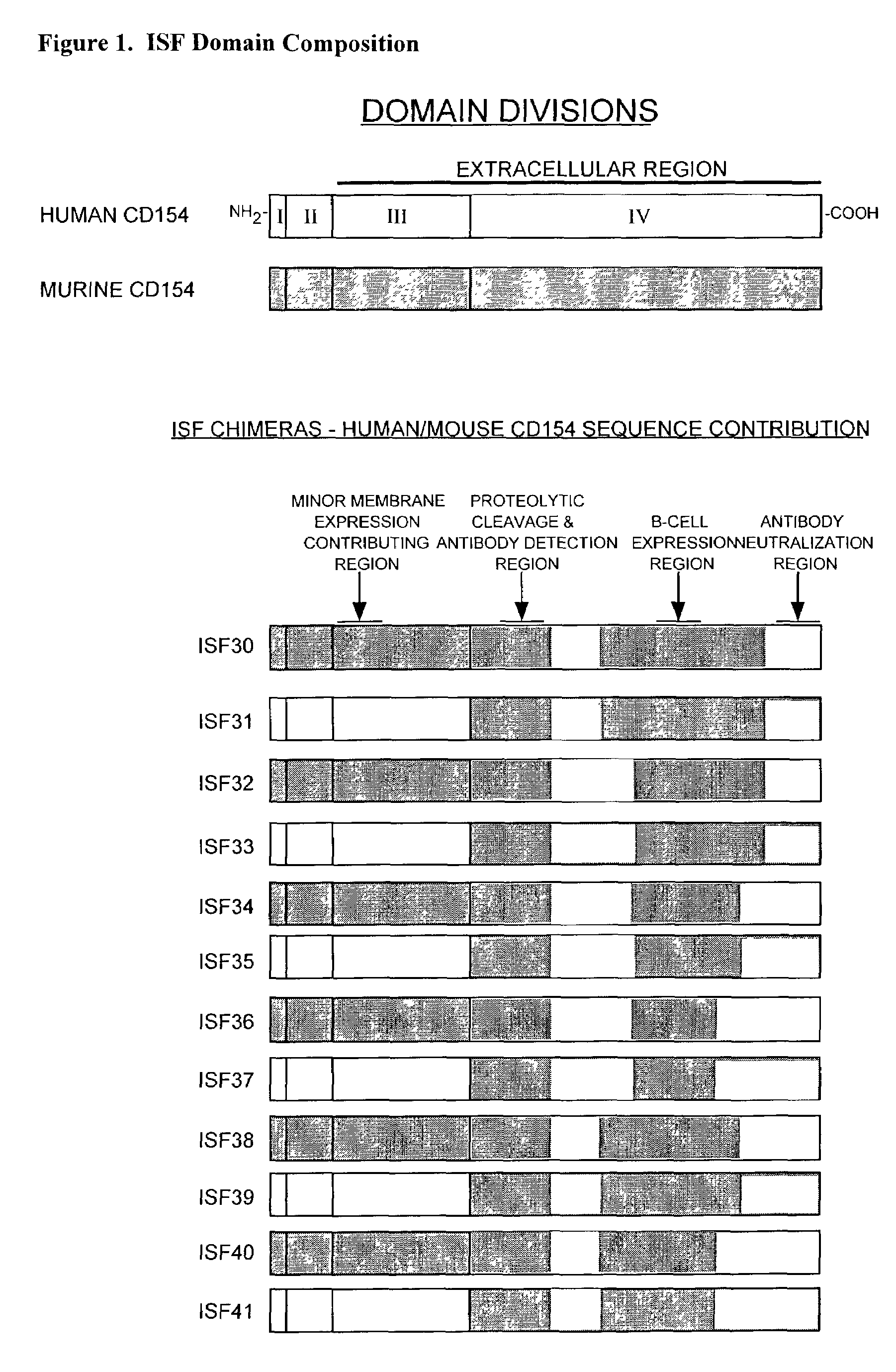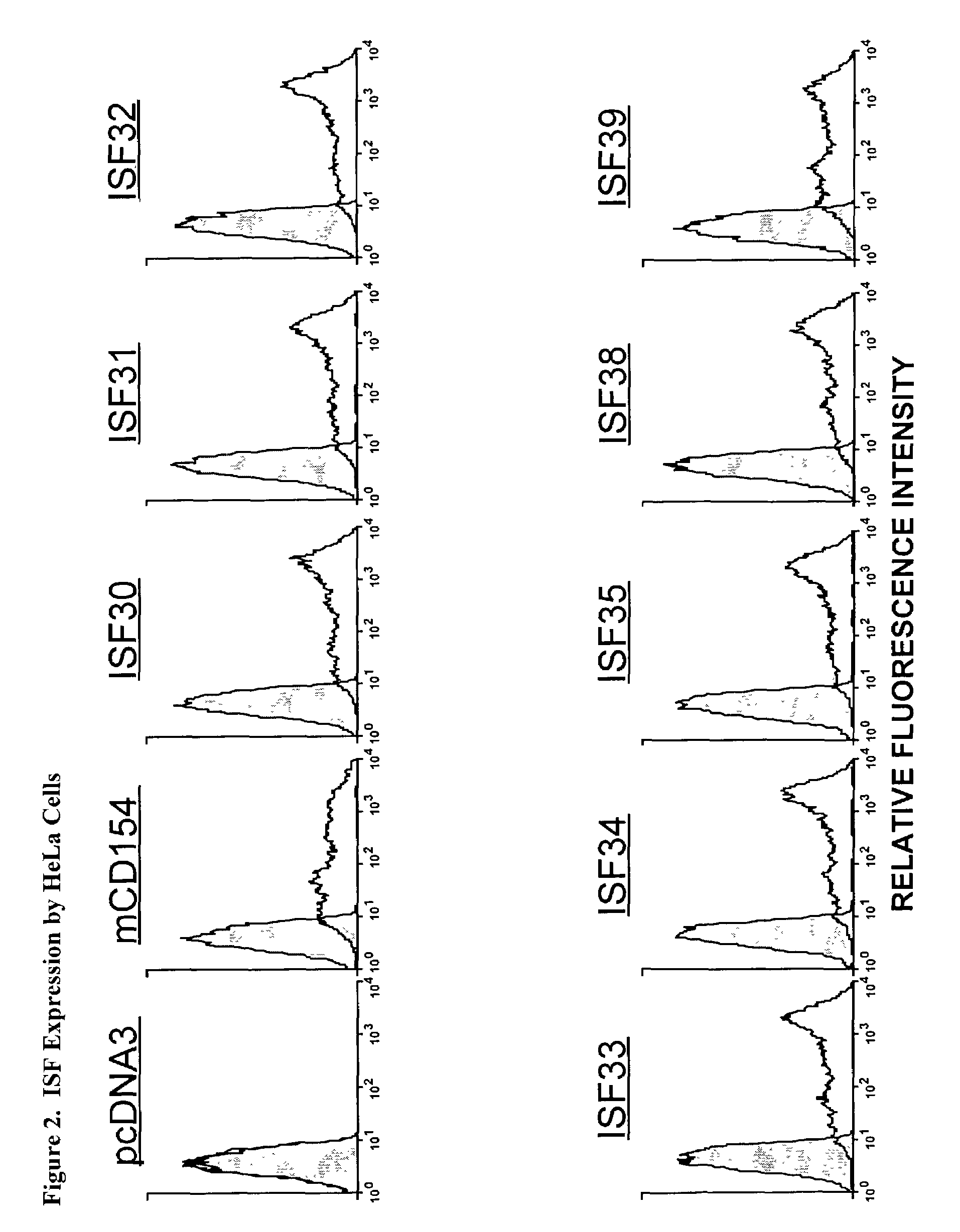Nucleic acids encoding chimeric CD154 polypeptides
a technology of chimeric cd154 and nucleic acids, applied in the field of nucleic acids encoding chimeric cd154 polypeptides, can solve the problems of soluble cd154 not being optimal for cross-linking cd40, unable to achieve cross-linking cd40 optimal, and unable to achieve soluble reagents that mediate cd40 signaling, so as to achieve safe and effective disease therapy and less resistan
- Summary
- Abstract
- Description
- Claims
- Application Information
AI Technical Summary
Benefits of technology
Problems solved by technology
Method used
Image
Examples
examples
1. Expression of Chimeric Accessory Molecule Ligand in Human HeLa Cells and CLL Cells
[0157]a. Construction of a Genetic Construct and Gene Therapy Vector Containing a Chimeric Accessory Molecule Ligand Gene
[0158]The chimeric accessory molecule ligand genes of SEQ ID NO. 1-SEQ ID NO. 12 (aka ISF 30-ISF 41) are prepared and cloned as follows:
[0159]i. Preparation of Chimeric Accessory Molecule Ligand Gene Utilizing Domains From Two Different Gene Species
[0160]The chimeric constructs of the present invention were designed by two well-characterized methods of gene fusion and site-directed mutagenesis. Substitution of large domains, for example fusion of the domain IV region of human onto domains I-III of mouse, was accomplished by a gene-fusion technique described by Ho48. Smaller gene replacements or amino acid substitutions were performed by a QUICKCHANGE site-directed mutagenesis protocol described by Stratagene, Inc (La Jolla, Calif.). Chimeric ISF genes were subcloned in the pcDNA3 ...
PUM
| Property | Measurement | Unit |
|---|---|---|
| Concentration | aaaaa | aaaaa |
Abstract
Description
Claims
Application Information
 Login to View More
Login to View More - R&D
- Intellectual Property
- Life Sciences
- Materials
- Tech Scout
- Unparalleled Data Quality
- Higher Quality Content
- 60% Fewer Hallucinations
Browse by: Latest US Patents, China's latest patents, Technical Efficacy Thesaurus, Application Domain, Technology Topic, Popular Technical Reports.
© 2025 PatSnap. All rights reserved.Legal|Privacy policy|Modern Slavery Act Transparency Statement|Sitemap|About US| Contact US: help@patsnap.com



